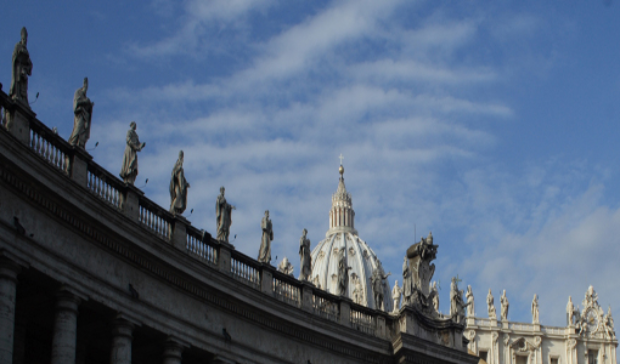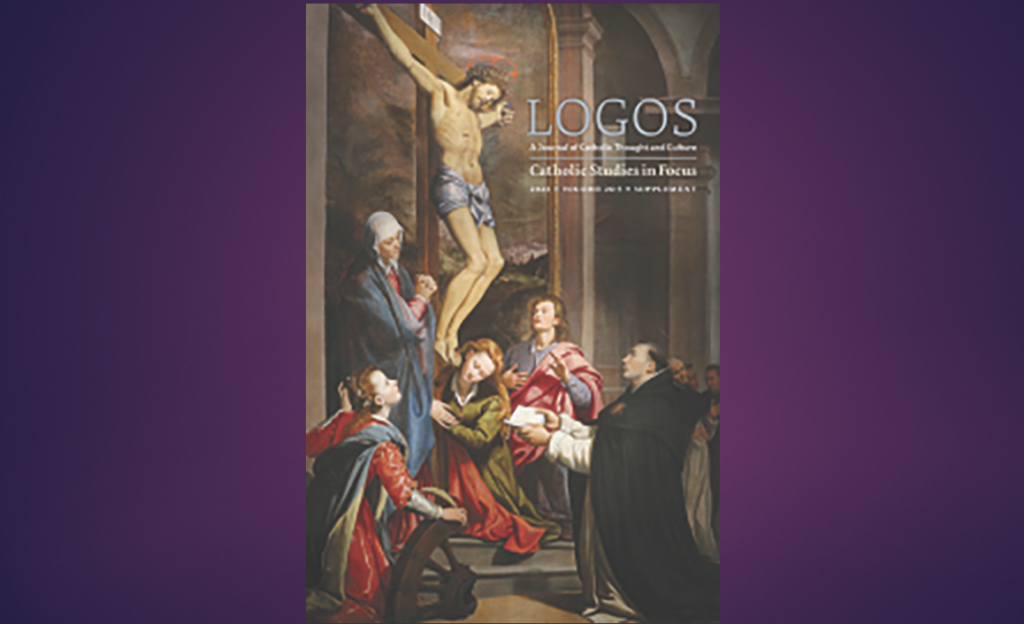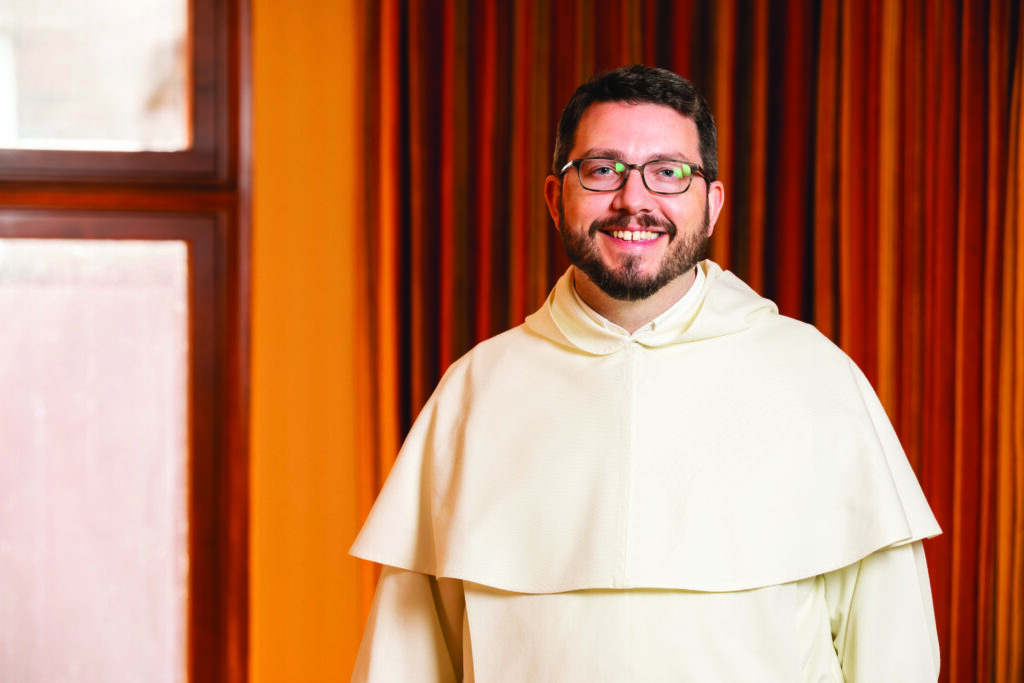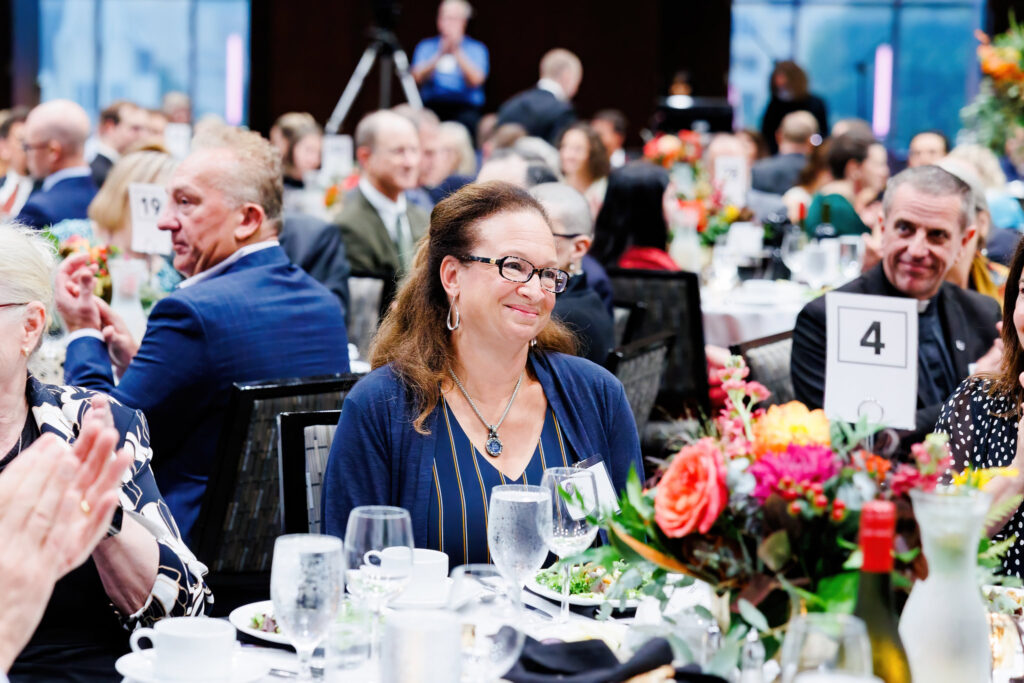When invited to give this lecture, I was genuinely honored, and I gladly accepted. I saw it as an opportunity to give something back to a community of learning I called home during my college years. I am honest with you when I say that any contribution I have made as a priest and now as a bishop is due in no small measure to the education and formation I received at St. Thomas.
As noted in your program, Monsignor James Habiger established this lecture series to celebrate his parents’ passion for education and to bring faith alive in the campus communities of St. Thomas and St. John’s University. Tonight, I want to contribute in some small way to that very noble and worthwhile initiative as I talk to you about the Second Vatican Council and invite you to see why it matters to your generation.
I want to make three points by way of introduction. First, it is important to recall that the reforms of the Council were not cosmetic and superficial changes designed to give the Church a more modern and updated look for the times. Many leaders in the Church were becoming increasingly concerned about the growing perception and criticism that the Church was not connecting with the lives of ordinary believers. The Bishops wanted people to know that their concerns mattered to the Church, and they made that abundantly clear in the opening lines of Gaudium et Spes:
“The joys and the hopes, the griefs and the anxieties of the people of this age, especially those who are poor or in any way afflicted, these too are the joys and hopes, the griefs and the anxieties of the followers of Christ. Indeed, nothing genuinely human fails to raise an echo in their hearts.”
Second, the Bishops realized that the reforms had to be comprehensive of the Church’s life if she was to speak with credibility and conviction to the people of this age. Just consider the vast scope of subjects treated: the understanding of revelation; the nature, membership and constitution of the Church; pastoral and missionary activity; other Christian communities and other religions; the liturgy; the laity; consecrated life; education; social communication; and the relations between faith and culture. It is easy to forget that the Council’s reforms were the most enormous undertaking in the Church’s history.
This leads me to my third introductory point. Given the serious and comprehensive nature of the Council’s work, it is more accurate to speak of the Council’s reforms as a number of shifts that reshaped the Church rather than mere changes that affected various aspects of Church life. I am going to focus on three of these shifts. My goal in doing so is first, to help you understand that the Council was about making the Church more effective and authentic in her mission of presenting the Gospel to your generation, and, second, to give you a sense of the enormous risk the Bishops took in calling for the most comprehensive reform in the history of the Church. It was a risk that they took for you, a point which might prompt you to take a second look at the Council not just as a part of human history but a part of your history.
The Work and Activity of the Holy Spirit For good reasons, the Second Vatican Council has often been referred to as a new Pentecost for the Church. Simply put, the Bishops, through the documents they issued at the Council, gave the baptized a fresh and, I would even say, revolutionary insight into how the Spirit of God works in the Church and in each of our lives. Each person is called to holiness, to mission and to contribute our understanding of the faith.
Holiness is the destiny of all the baptized. The Bishops recovered the Church’s rich tradition that each baptized person is called to holiness in the very circumstances of their own lives. This is how they put it in Lumen Gentium: “In the various types and duties of life, one and the same holiness is cultivated by all who are moved by the Spirit of God. . . . All of Christ’s followers, therefore, are invited and bound to pursue holiness and the perfect fulfillment of their proper state.” The Spirit also works in the baptized by calling them to share in the mission of Christ and the Church. According to the Bishops in Apostolicam Actuositatem, each Christian has the “splendid burden of working to make the divine message of salvation known and accepted by all men throughout the world.” Finally, all the faithful, through baptism, contribute to the development of the Church’s understanding of its teaching and heritage.
Most Catholics at the time of the Council would have considered these ideas new if not somewhat revolutionary. While there was never a denial that the Spirit was active in the lives of each baptized person, the call to holiness and sharing in the mission of Christ was commonly understood to be the work of the ordained or vowed religious. After all, they were the ones who dedicated their lives to this. They lived, dressed and acted as though set apart for this higher purpose. The Bishops at the Council clearly wanted to move away from this limited reading of the work of the Spirit. They did so by reaffirming the ancient teaching about the priesthood of the faithful, the dignity of the baptism we share in common.
The recovery of these much richer and more traditional descriptions of the activity of the work of the Spirit in each believer was not just an academic exercise. The Bishops were faced with the crisis in faith that many people were experiencing as the world had just gone through two brutal world wars. People began to wonder whether there was really any connection between religious faith and everyday life. The Bishops responded to this Christian identity crisis by clearly articulating the meaning of Christian baptism and by reforming the Church’s rituals and structures to allow for and encourage greater participation in her life and mission.
My experience tells me the questions and aspirations the Bishops identified 40 years ago are very much alive in the present generation. I honestly believe an increasing number of people are concerned about their spiritual lives and want to live authentically. However, this renewed interest in the spiritual life presents some unique pastoral challenges. The time and culture we live in is so heavily influenced by a climate of radical individualism. In fact, many today speak of spirituality or growth in the spiritual life in terms of a self-improvement or selfactualization program, the success of which is measured by how it leaves one feeling. This is not a spirituality that belongs to Christian baptism. Rather, as the Council reminded us, the true test that we are living in the Spirit is as old as the day Jesus, himself filled with the Holy Spirit, stood in his hometown synagogue, unrolled the scroll and read from the prophet Isaiah:
“The Spirit of the Lord is upon me ...to bring glad tidings to the poor, to proclaim liberty to captives, recovery of sight to the blind, release of prisoners and to announce a year of favor from the Lord.”
According to the Bishops, this passage is the point of reference for an authentic Christian spiritual life, for anyone graced with the Holy Spirit in baptism.
Christ was sent by the Father “to bring good news to the poor, to heal the contrite of heart..to seek and to save what was lost.” Similarly, the Church encompasses with love all who are afflicted with human suffering, and in the poor and afflicted sees the image of its poor and suffering Founder. (Lumen Gentium 8)
From the earliest days of the Church, taking responsibility as members of a community for the poor and the weak has been the true test of an authentic Christian spirituality, one that had to be recaptured if the Church was going to be a credible witness to the Gospel and an answer to the deepest aspirations of people living in our time. As one spiritual writer put it when addressing young people of today about coming to an authentic spirituality, “You will know you are on the right track when you can say with conviction and understanding: ‘My life is not about me.’” This approach has a perennial quality that is needed today.
The Church’s Self-Understanding While the first shift involved the identity of each baptized person, the second shift was about the Church’s very self-identity. As then- Father Avery Dulles, SJ, notes, this identity shift took place during the Council itself: “The successive drafts of the Constitution (The Dogmatic Constitution of the Church), compared with one another, strikingly reveal the tremendous development of the Church’s self-understanding which resulted from the dialogue within the Council.”
Those who prepared the first draft relied on a vision that portrayed the Church as a hierarchical and juridical institution. Putting this initial attempt aside, the Bishops opted for a different approach, a pastoral approach, one that relied on a more biblical understanding of the Church. As a result, instead of beginning with a discussion of the governance structures of the Church, the Constitution opens with a portrayal of the Church as a people whom God invites into intimate union. Throughout the text, biblical images such as “the Body of Christ,” “the People of God,” and “mystery” are used to stress the communal nature of the Church.
This shift has had a profound effect in the life of the Church on various levels. Let me cite two. First, by placing greater emphasis on the communal nature of the Church, it was clear that her structures of organization and communication had to be adapted accordingly. With no little struggle, we began to see shortly after the Council the emergence of consultative bodies in the Church such as parish and presbyteral councils, the synod of bishops and the refashioning of episcopal conferences.
Second, this more communal nature of the Church aided the liturgical renewal, which called for greater participation of all the baptized. The shift in the Church’s self-understanding, based on biblical images, gave more theological depth to this move towards greater participation. As members of the Body of Christ, a priestly community, all the baptized “offer the divine victim of God and . . . by the act of oblation and through Holy Communion, all perform their proper part in the liturgical service.” (Lumen Gentium 11)
Without question, the Bishops were attending to the results of recent scholarship in scripture and the writings of the early Church Fathers in emphasizing this more communal understanding of the Church. It is no less true that the Bishops also had an eye to the world’s situation and the growing aspiration for greater human solidarity in the world. As noted earlier, the world had just gone through two horrific world wars. These wars, however, did not bring true peace but only the Cold War with its threat of mutual atomic annihilation. It was important for the Church to give the world a message of hope. The world heard that message on the opening day of the Council, Oct. 11, 1962, when Pope John XXIII called humanity to see that Divine Providence was “leading us to a new order of human relations.”
The Council Fathers understood that the Church had more to offer the world than words when it came to promoting human solidarity. The Church had to lead by example, which meant renewing her internal life as a community of faith. It is important, however, to recall what we mean when we call the Church a community. The members of the Church are not a community because they have beliefs in common or because of what they do. They are members of this community because of what Christ did in shedding His blood on the Cross. It is this action of Christ which unites members to His work of reconciling the world. The unity we have with each other as a community of faith is the result of that union with Christ, and of the work of salvation that we accomplish together through Him as Head of the Body. The touchstone for this work is the Cross, in which all members are signed and made into the Body of Christ, with the hope and mission that all of humanity will one day share in this solidarity:
“This (the Church’s) inauguration and growth are both symbolized by the blood and water which flowed from the open side of a crucified Jesus, and are foretold in the words of the Lord referring to His death on the Cross: ‘And I, if I be lifted up from the earth, will draw all things to myself.’ As often as the sacrifice of the Cross…is celebrated on the altar, the work of our redemption is carried on, and, in the sacrament of the eucharistic bread, the unity of all believers who form one body in Christ is both expressed and brought about. All men are called to this union with Christ, who is the light of the world, from whom we go forth, through whom we live, and toward whom our whole life strains.” (Lumen Gentium 4)
The Church: From Defensive Bulwark to Servant of Humanity The third and final shift is related to how the Church interacts with the world. Clearly this issue was on the minds of Church leaders as they came together for the Council. Many bishops were calling for more openness to the world and dialogue with those outside of the Church. Still others considered the Council an opportunity to issue new condemnations of errors and were talking openly of this to the media. Pope John XXIII quickly dispelled these doomsayers in his inaugural message to the Bishops. He admitted that the Church rightly opposed errors and frequently condemned them in the past, but then he added:
“Nowadays, however, the Spouse of Christ prefers to make use of the medicine of mercy rather than that of severity. She considers that she meets the needs of the present day by demonstrating the validity of her teaching rather than by condemnations.”
John XXIII then used the story of Acts 3, in which Peter cures the lame beggar, to illustrate how the Church, knowing that humanity is “oppressed by so many difficulties,” is interested in serving the human race. Her mission is “to distribute the goods of divine grace which, raising men to the dignity of the sons of God, are the most efficacious safeguards and the aids toward a more human life.” By her teaching, the Church enlightens humanity to “understand well what they really are, what their lofty dignity and their purpose are.” Finally, through her members,
“She spreads everywhere the fullness of Christian charity, than which nothing is more effective in eradicating the seeds of discord, nothing more efficacious in promoting concord, just peace, and the brotherly unity of all.”
These sentiments were echoed by the Fathers of the Council as they made clear to the world that the Church has come to a new selfunderstanding.
“Inspired by no earthly ambition, the Church seeks but a solitary goal: to carry forward the work of Christ... to give witness to the truth, to rescue and not to sit in judgment, to serve and not to be served.” (Gaudium et Spes 3)
There was no more visible example of this new approach to the world by the Church than Pope John XXIII and his successors. The pope became much more present and approachable. It was sensational but welcome news when Pope Paul VI began traveling to other countries in the 1960s and when he addressed the United Nations in New York. He was dubbed “the Pilgrim Pope.” Now, we think nothing of it. John Paul II has traveled over 700,000 miles, the equivalent of 29 trips around the world. It is true that his personality is somewhat responsible for his globetrotting and demanding schedule. But as a Father of the Council, the Holy Father has taken seriously during these twentyfive years of his pontificate the mission of the Church to be present – for the world, not against it.
How has this new approach by the Church to the world been received? While I could point to any number of positive reactions, I want to share with you a tribute that Kofi Annan, the Secretary General of the United Nations, paid Pope John Paul II on the occasion of his silver jubilee. Annan calls the pope the world’s “most 23 powerful voice of peace, hope and justice.”
“He has reminded us that lasting peace means more than the absence of war. . . He has reminded us of our obligations to one another. . . He has explained how we can give our globalizing world a soul, a meaning and a direction. . . I have been fortunate enough to be inspired by that voice firsthand.”
A Vatican spokesman recently spoke about the pope’s universal appeal in a way that captures the unique contribution the Church can make to the world:
“He is the only global leader who is concerned about the spiritual well-being of today’s men and women, as opposed to just their material well-being. He asks, ‘Who are you?’ instead of ‘What do you do?’ or ‘What do you want to buy?’ and people understand this and respond to it.”
The pope knows that he is not the only one in the Church responsible for this mission of service to the world. Time and again, he has reminded us that we all, as members of the Body of Christ, have a share in an outreach to the world. Like him, we are to be servants who are “not inspired by any human ambition.” Rather, we are doing the work of Christ by being the voice for the voiceless and speaking the truth in a way that liberates human beings to respond to their dignity. We are serving as Christ when we build relationships with the stranger, welcome the homeless, and speak words of peace to a world that too easily opts for a violent solution to its problems. In effect we, like Christ, do what we do because we are concerned about the spiritual well-being of all of humanity.
While each of these three shifts is far from complete, I believe this last one is the most demanding for the Church. We are still learning how to speak with those who reject the Gospel. Open and mature dialogue is never easy, but the strength and patience it demands will keep us from the two extremes, a quick condemnation of those at odds with us or an easy compromise of our own position so that we fit in. This is true in dialogue with people of other faiths and traditions or with politicians and elected officials. This is a work in progress, but it needs to go forward if the Church is going to be true to her identity as a servant to the world, not against the world or of the world, but for the world.
Conclusion The Fathers of the Council, as your elders, boldly looked ahead to your day with hope. Their actions and their writings were crafted to speak to your hopes and aspirations. They took the risk of bringing about the most dramatic renewal of the Church in history because they believed you were worth it, and they made a compelling case for it. That is why the Council should matter to your generation.
No one better speaks of this confidence in you than John Paul II, whom the universal Church happily honors tomorrow as he marks his twenty-fifth anniversary as the Successor of Peter. I leave you with an excerpt from his last message to young people in Toronto. His words express the confidence of those who two generations ago looked ahead to your time and prepared the Church to receive you:
“At the end of this World Youth Day, as I look at you now, at your young faces, at your genuine enthusiasm, from the depths of my heart I want to give thanks to God for the gift of youth, which continues to be present in the Church and in the world because of you… You will carry the proclamation of Christ into the new millennium. I look with confidence to this new humanity which you are now helping to prepare. I look to this Church which in every age is made youthful by the Spirit of Christ and today is made happy by your intentions and commitment. I look to the future and make my own the words of an ancient prayer: I give thanks to you, Father of us all, for the life and the knowledge which you have revealed to us through Jesus your servant. To you be glory in every age! AMEN.”





